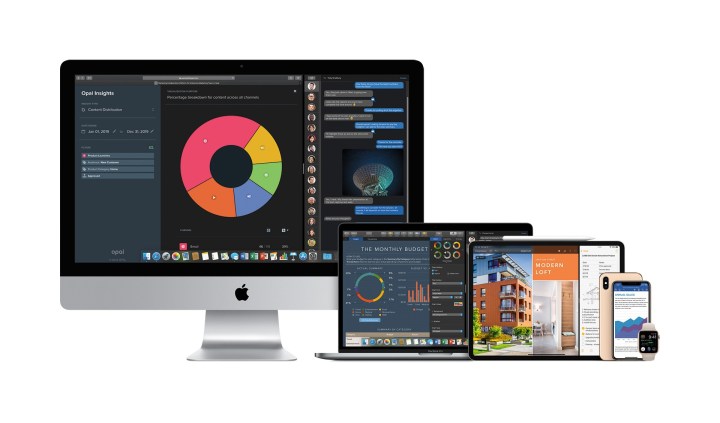SPONSORED CONTENT
Re-thinking the total cost of tech in organisations

It is no surprise that, today, the demands placed on an enterprise’s technology infrastructure are evolving faster than ever. As IT plays such a key role in enabling digital transformation, the IT function has morphed from purely supportive to serving as an enabler of change.
In this context, it’s important to interrogate the way in which we conceive tech infrastructure.
It is a misconception that IT costs end at the point of purchase. The initial purchase is merely a fraction of the total cost businesses should be considering.
In fact, research shows that a PC’s base price typically represents less than 50% of its total cost of ownership (TCO), with deployment, support, maintenance, management and other costs accounting for the balance.
Without assessing the TCO, it can be difficult to understand the real costs of IT equipment, in the long run. So let’s look at TCO, with a view to re-thinking which elements of enterprise IT expenditure do and should warrant the highest levels of scrutiny.
Defining TCO
If we define TCO as the total cost of using and maintaining an IT investment over time, comprehensive TCO calculations should include a combination of direct costs (hardware, software, operations, support and administration) and indirect costs (end-user operations and downtime).
IT spending, then, becomes a balancing act between hardware, software and services – with ecosystem management playing a large role in cost reduction.
Other considerations should encompass deployment, support, maintenance, management, and a host of ‘soft’ upsides relating to productivity, performance, and talent acquisition.
Mac@IBM
Consider the experience of IBM, where the user choice program, Mac@IBM, has enabled the deployment of 134,000 Macs, 90,000 iPhones and 40,000 iPads.
Fletcher Previn, IBM’s CIO, says that for every Mac device IBM purchases for its workforce, the company saves $273 to $543 (depending on the model), versus the TCO of comparable PCs during a four-year lifespan.

Yes, the upfront cost per Mac may be higher than a PC, but the former’s residual value is also higher, in addition to:
- Leveraging Apple Business Manager (ABM) and a reliable Mobile Device Management solution, such as JAMF or Meraki to streamline deployment and save on upfront costs
- Lowered support costs due to hardware reliability plus significantly less deskside support requirements
- Enhanced and inbuilt security on the platform
- Free operating system with regular security and feature updates
- Lifecycle management – either leveraging Mac’s long lifecycle and performance or taking advantage of the higher trade-in values
Other case studies
While uniquely South African evidence relating to Mac vs PC TCO is in its relative infancy, this is not the case in the United States, where multiple studies demonstrate that a Mac’s TCO is 15 to 30% less (depending on user group) than PC systems.
Furthermore, there’s an average saving in support spend per user of up to $205 over three years, with up to 80% fewer Mac support tickets.
The right questions
To get to ‘real costs’, it is important to ask the right questions about upfront costs, how platforms are supported, and what needs to be done to increase operating efficiency within your specific environment.
In short, if we simplify the situation to a choice between Mac and PC:
- Does a standard-configuration Mac solution perform at the same level as a standard-configuration PC solution, or does it outperform it?
- Have you looked at what your acquisition costs would be if you had a mix of Mac and PC solutions in your environment?
- Do you know how much support really costs, when you compare Mac and PC – in terms of types of issue, number of support tickets, time to resolution, and potential for self-help?
- Have you tracked the time it takes to image and deploy each Mac and PC machine?
- How does the hardware refresh lifecycle differ between Mac and PC?
- What is the difference in trade-in value between Mac and PC?
- Do you know what device your employees would prefer to work on and what that impact would have on work satisfaction, productivity and talent acquisition?
Now, we don’t expect you to ask and answer these questions yourself.
iStore Business provides a professional in-depth TCO analysis for you because we believe that, in most cases, companies will find significant savings over the full lifecycle by switching to an Apple enterprise program.
Stop and think about the cost experience in your own environment. Should you want to uncover some real numbers, contact iStore Business today. BM
About iStore Business
iStore Business is not just another partner, and the power of Apple does not begin and end with the product. At present, we’re successfully servicing 500+ enterprise clients and over 15,000 SMEs with an interconnected ecosystem – a blended desktop and mobile experience – that’s ideal for business IT. And we believe that Apple proves to be more affordable than existing hardware choices. Contact us today to request a TCO analysis for your business’s IT.
















 Become an Insider
Become an Insider